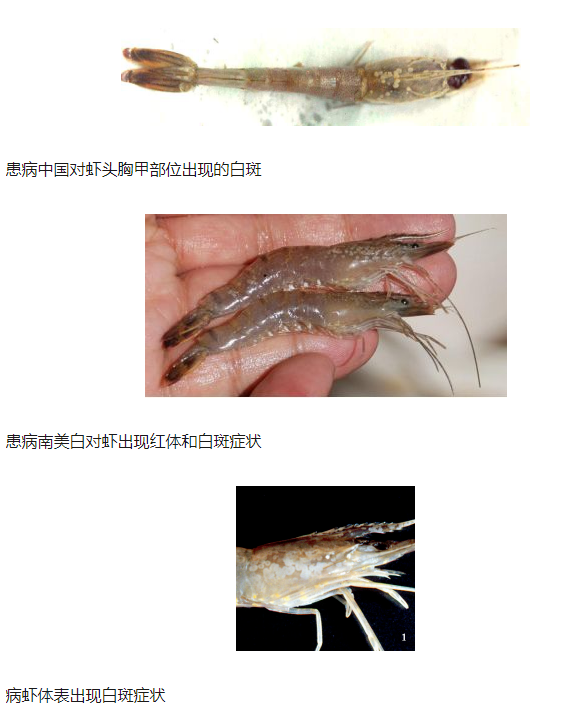The main cultured species are Penaeus vannamei, Crayfish (crayfish), green shrimp, Macrobrachium rosenbergii and so on. In recent years, there are 6 main diseases and emerging diseases that endanger my country's aquaculture shrimp, including 4 viral diseases, 1 bacterial disease and 1 fungal disease. In order to popularize the knowledge of these important epidemic diseases and publicize the prevention and control measures, we organize the compilation of relevant knowledge and common sense of prevention and control of shrimp epidemics for the reference of relevant parties.
viral disease
The vitiligo syndrome
White spot syndrome (WSS) is a viral disease that seriously endangers farmed shrimp. It is a first-class animal disease in my country. At present, the disease is prevalent in major shrimp farming areas in China.
【pathogen】
The pathogen is vitiligo syndrome virus, which belongs to the family Lineoviridae, genus Vitiligo. The virus particle is club-shaped and looks like a thick stick-shaped coil with the end of the thread exposed. The size of the virus is (80~120) nm × (250~380) nm, and the nucleic acid type is DNA.
【Popular Features】
White spot syndrome virus can infect shrimp eggs, larvae, larvae, juveniles and adults. Virus infection occurs when the temperature of the breeding water is between 20 and 30 °C.
Susceptible species include farmed shrimp such as Penaeus chinensis, Penaeus monodon, Penaeus vannamei, Penaeus japonicus and Crayfish.
Oral infection is the main route of WSSV infection and transmission in farmed shrimp. The virus can also be transmitted vertically through shrimp eggs. Ingestion of white spot syndrome virus-infected crustaceans by prawns results in horizontal transmission of the virus.
【Clinical symptoms】
During the outbreak of white spot syndrome, the diseased shrimp moved abnormally, bounced weakly, roamed on the water surface or lay still on the bottom of the pool, and died quickly. The common clinical symptoms of diseased shrimp are white spots on the carapace, less than 3 mm in diameter, or connected into pieces. However, it should be noted that some diseased shrimp have little or no white spots on the carapace. In diseased populations, the color of the shrimp varies widely, mostly reddish or pink.


Location: Science and Technology Center, High-tech Zone, Shijiazhuang City, Hebei Province
Business Hotline: 186-3213-6937
Headquarters Tel: 0311-82970259
Email: sanshibio@126.com
